Katakana - Katakana
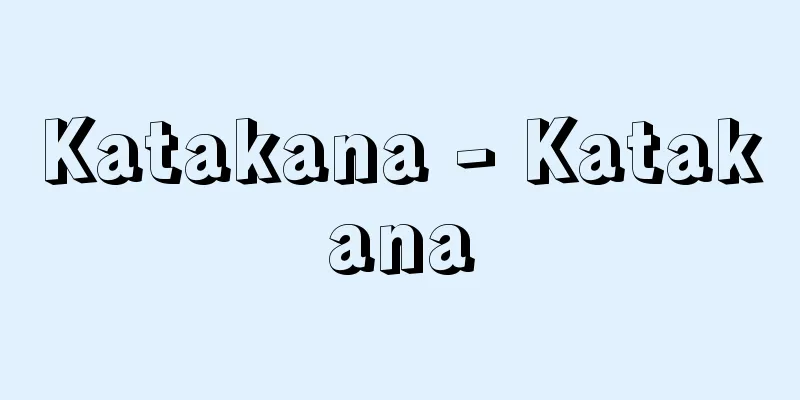
|
〘Noun〙 ("Kata" means not complete, a part. "Kana" is a variation of "karina")① A set of 48 syllabaries used to write Japanese. It is thought to have originated in the early Heian period, when scholars of Nara Buddhism used a simplified version of Manyo-gana to add reading marks to Buddhist scriptures. Today, it is mainly used for foreign words and onomatopoeic and mimetic words. Katakana. Yamato-gana. The 50 sounds of the alphabet. Miniature kana. ⇔ Hiragana. *Utsubo (around 970-999) Kuniyori-jo: "Neither man, nor woman, heaven and earth. Next comes man's hand, written in a different style. <Omitted> Next comes katakana."② (From the fact that it is often written with the characters in ①) Foreign words. Foreign languages. ※Gyojin (12-13)〈Natsume Soseki〉Jinro “So when it comes to inserting katakana characters that have nothing to do with you, I tend to hesitate even more.”[Glossary](1) It was during the late Heian period that katakana became independent from the reading of classical Chinese and began to be used to spell out sentences in the Japanese language. Since then, katakana sentences mixed with kanji and hiragana sentences have been written side by side. (2) In 1900 , the current character style was established by the Enforcement Regulations of the Elementary School Act. Old characters that differ from the current character style are called "variant na" or "old na" (for variant na, see the individual entries for the Gojuon). While hiragana originated mainly from the cursive style of Manyo-gana, most katakana are abbreviated, so they are sometimes called "abbreviated na". The origins of the characters include those that are the direct form of simple kanji with dots (chi-sen, ni-ni, ha-ha, etc.), those that are the first few strokes of kanji (ku-hisa, sa-san, no-no, etc.), those that are the last few strokes of kanji (e-e, nu-nu, ho-ho, etc.), and those that are based on cursive or semi-cursive script (ki-iku, shi-yuki, ya-ya, etc.). "n" was added to the katakana list relatively later. (3) Katakana is often used to indicate pronunciation, and lowercase katakana may be used to represent syllables not found in the normal Japanese language, or may be used as an auxiliary when a phonetic representation is particularly necessary (e.g., che, fu, si). Katakana (katakana)Source: The Selected Edition of the Japanese Language Dictionary About the Selected Edition of the Japanese Language Dictionary Information |
|
〘名〙 (「かた」は完全でない、一部分の意。「かな」は「かりな」の転)① 国語を書き表わすのに用いる音節文字で、四八個を一組とする。平安初期に、南都仏教の学僧たちの間で、経文に訓点を加えるために万葉がなを簡略化して用いたところに発すると考えられている。現在では、主に外来語や擬声語・擬態語などに用いる。かたかんな。やまとがな。五十音がな。豆仮名。⇔平仮名(ひらがな)。※宇津保(970‐999頃)国譲上「男にてもあらず、女にてもあらず、あめつちぞ。そのつぎに男手、はなちがきに書きて。〈略〉つぎにかたかな」② (①の文字で表記される場合が多いところから) 外来語。外国語。※行人(1912‐13)〈夏目漱石〉塵労「それで貴方に関係のない片仮名(カタカナ)抔を入れる時は、猶更躊躇しがちになりますが」[語誌](1)かたかなが漢文の訓読から独立して、国語の文章をつづるのにも用いられるようになったのは平安後期で、それ以来、漢字まじりかたかな文とひらがな文とが並び行なわれることになった。 (2)明治三三年(一九〇〇)に小学校令施行規則で現在通用の字体が定まった。その通用字体と異なる古い字体のものを、異体がな、古体がななどという(異体がなについては、五十音の各項を参照)。ひらがなが主として万葉がなの草書体に発したのに対して、かたかなの多くは省筆によるので、これを略体がなとよぶこともある。その字源は、点画の簡単な漢字の形をそのままとったもの(チ‐千、ニ‐二、ハ‐八など)、漢字の最初の数画をとったもの(ク‐久、サ‐散、ノ‐乃など)、最後の数画をとったもの(エ‐江、ヌ‐奴、ホ‐保など)、草書体また行書体にもとづくもの(キ‐幾、シ‐之、ヤ‐也など)がある。「ン」は比較的後にかたかなの列に加えられた。 (3)発音を示すときにはかたかなを用いることが多く、かたかなを小文字にして普通の国語にない音節を表わしたり、特に表音の必要のある場合などに補助的に用いることがある(ちェッ、ふァ、スィなど)。 かた‐かんな【片仮名】出典 精選版 日本国語大辞典精選版 日本国語大辞典について 情報 |
<<: Katakanaiseki - Katakanaiseki
Recommend
Alternative - Change
A term in Japanese music. Also called "kaede....
John Henry O'Hara
American novelist. After working for newspapers a...
Crab-eye - Crab-eye
…Pollux is the Latin name of Polydeuces in Greek ...
Naomori Sakazaki - Upside-down weight
A military commander from the Sengoku to the earl...
Compound explosives - explosives
...The theoretical nitrogen content is 14.14%, bu...
Relocation expenses - tetenhi
…It was established in 1974 to replace the unempl...
Hotbed line - Onshosen
...To ensure smooth heat generation, several type...
Nagayo Sensai - Nagayo Sensai
Year of death: September 8, 1902 (Meiji 35) Year o...
Segovia
A Spanish guitarist. He revived the classical guit...
Recessive
Regarding a pair of allelic traits in an organism...
Davies, D.
…A painter from the period of the Pre-Raphaelite ...
Forestry management - forestry management
Japan's forests are divided into national fore...
Mr. Ono
A branch of the Kasuga clan. They were originally ...
Sanyo Expressway - Sanyo Expressway
This expressway runs from the Hanshin region to t...
Ueda Hodou
...Tozan-ryu spread in a short time thanks to the...
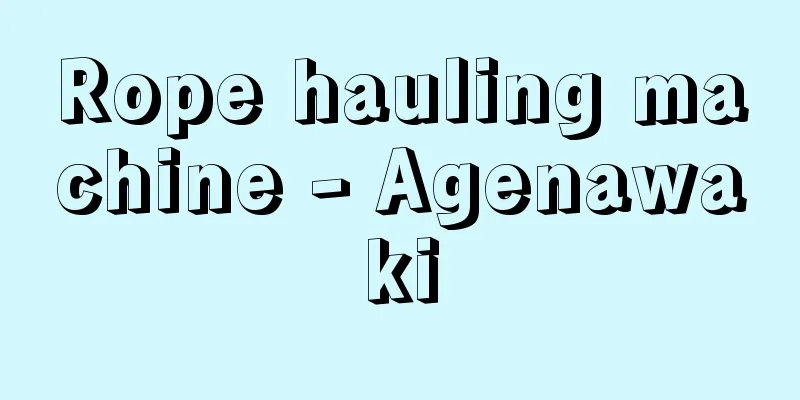

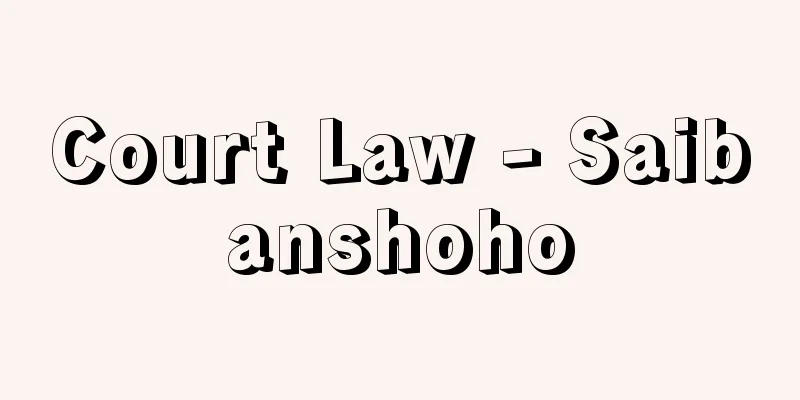

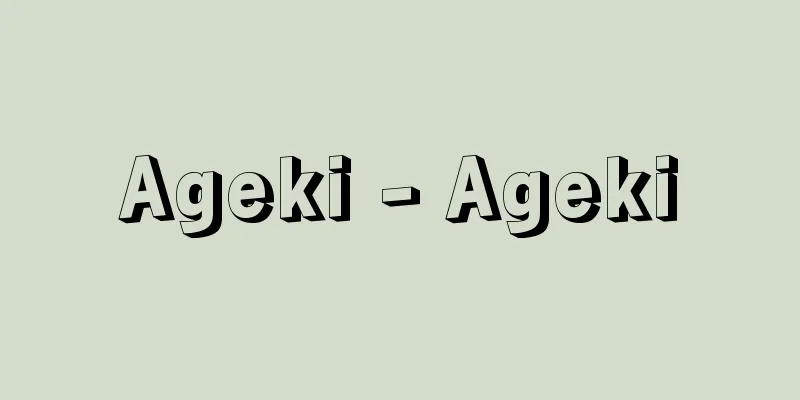
![Tamagusuku [Village] - Tamagusuku](/upload/images/67cc25ccc50e3.webp)
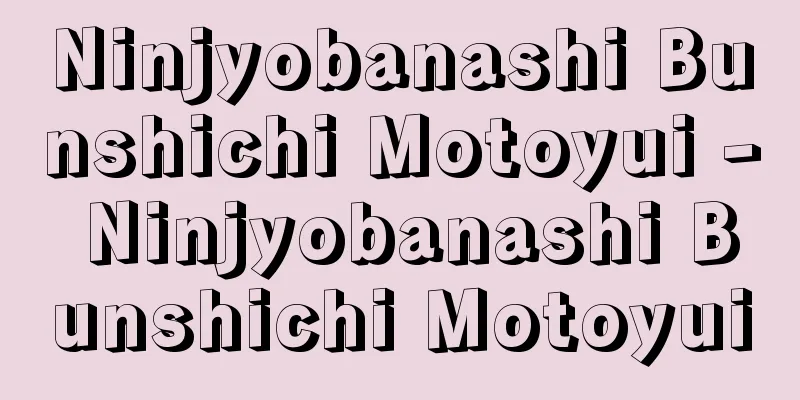
![Takanezawa [town] - Takanezawa](/upload/images/67cc1da5b1aa0.webp)

